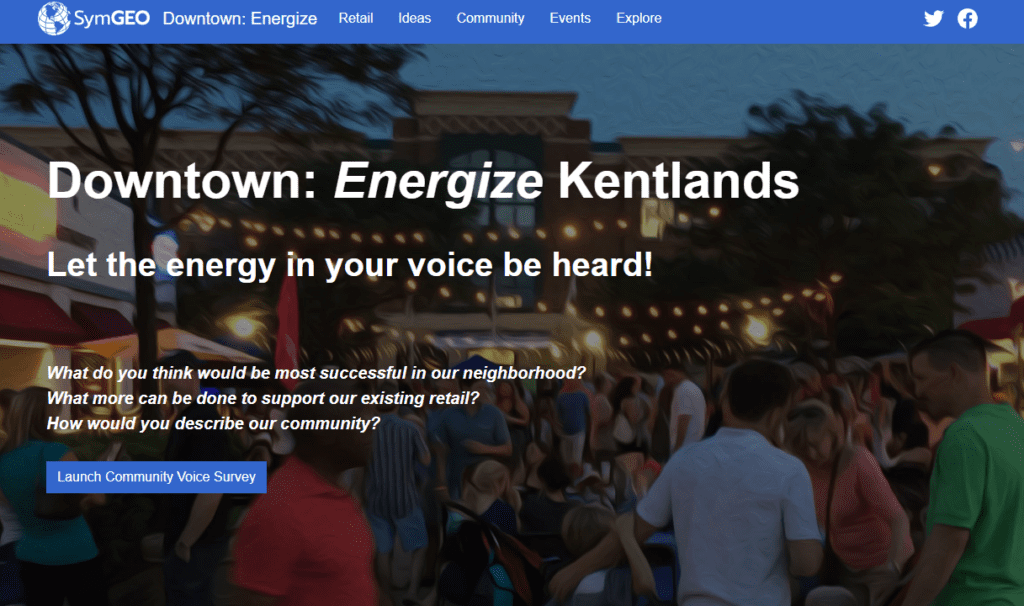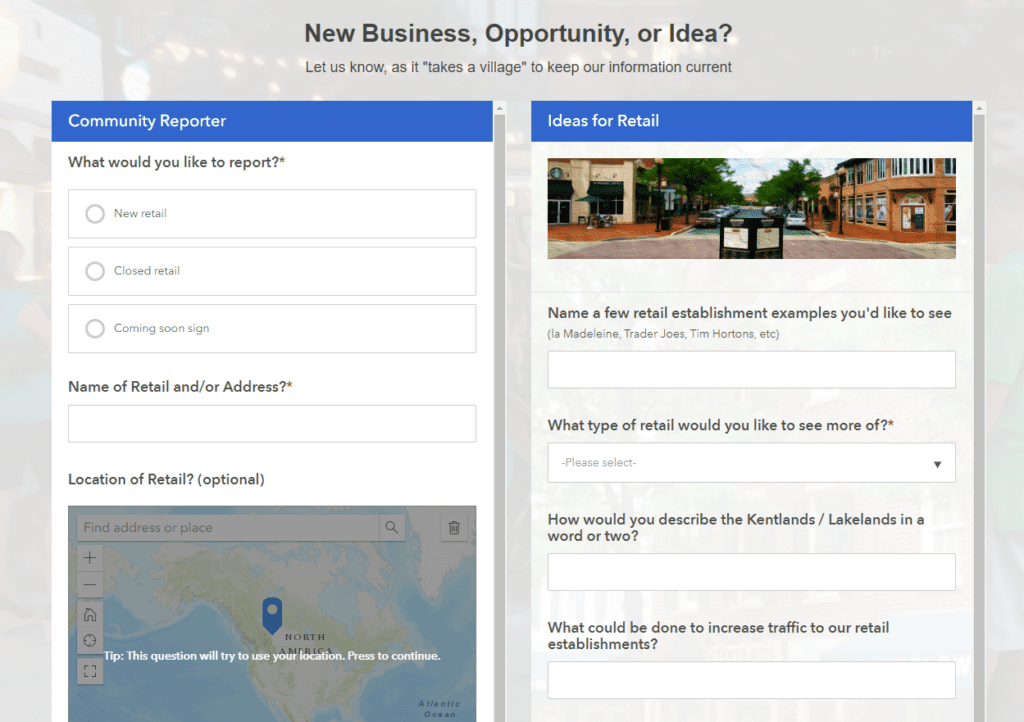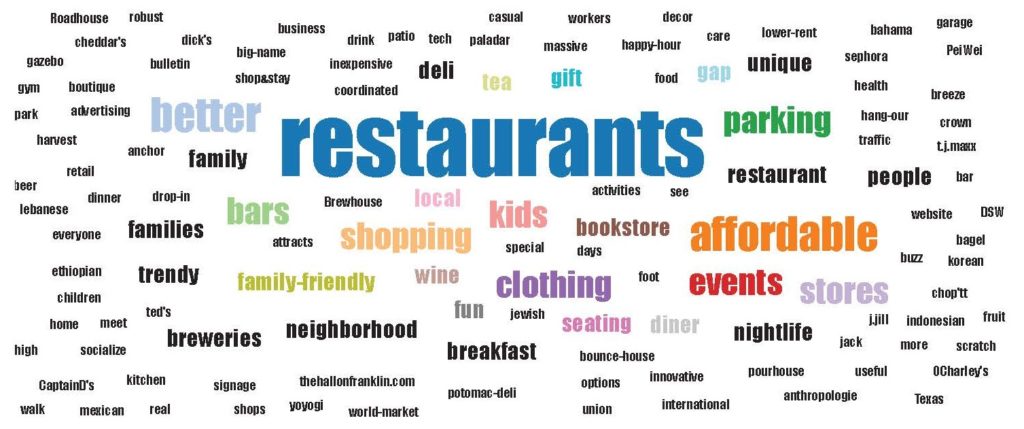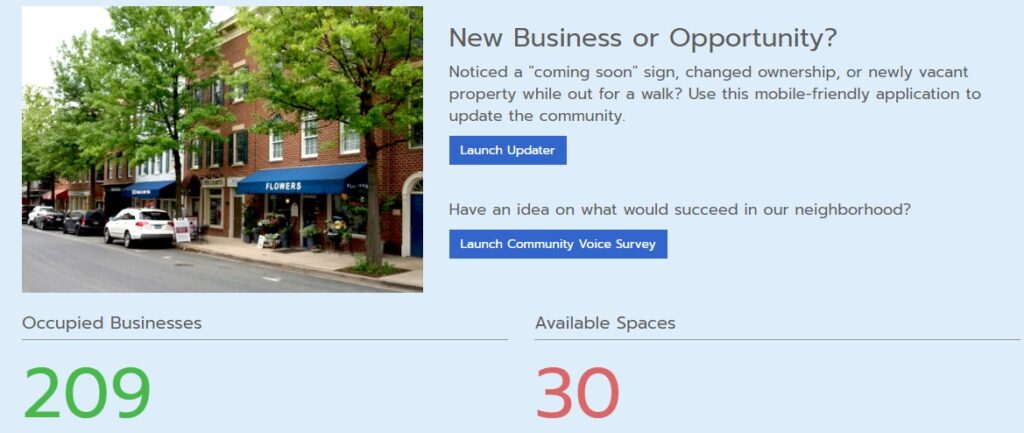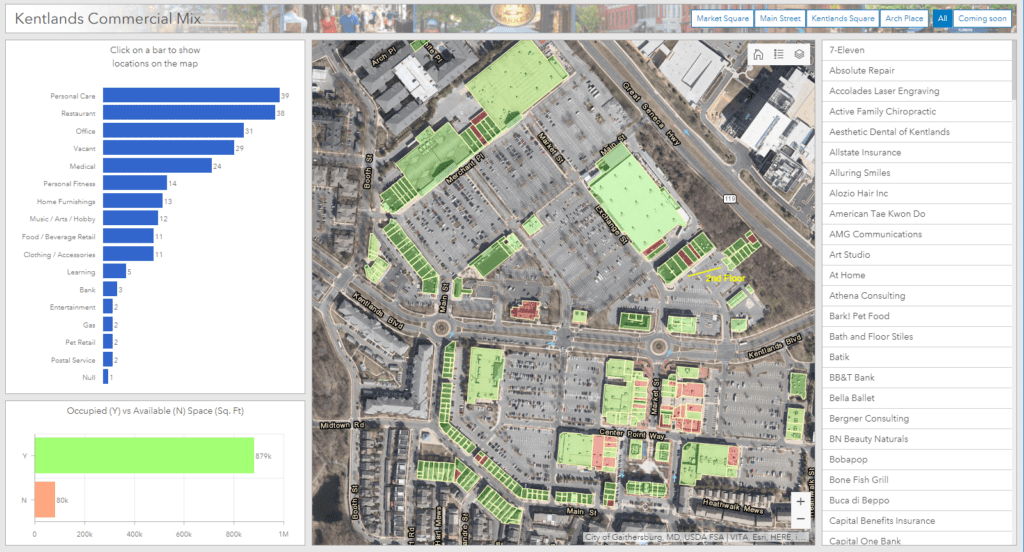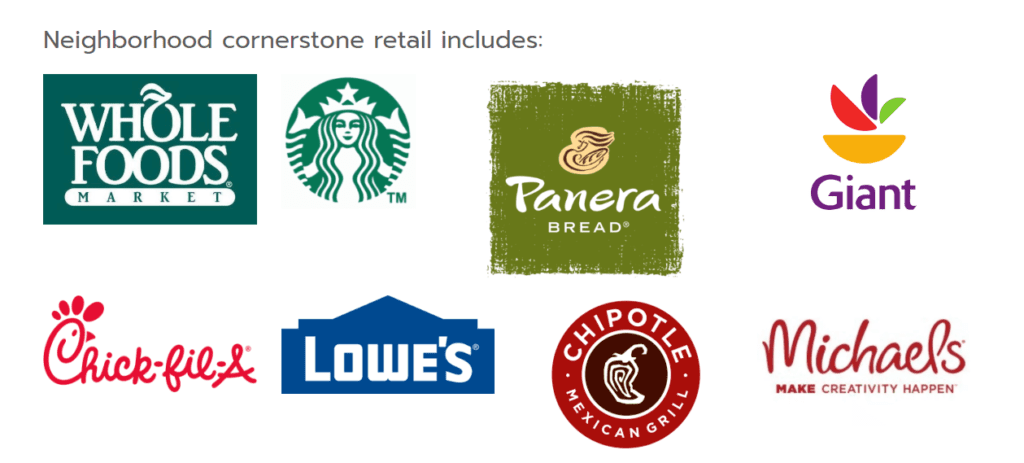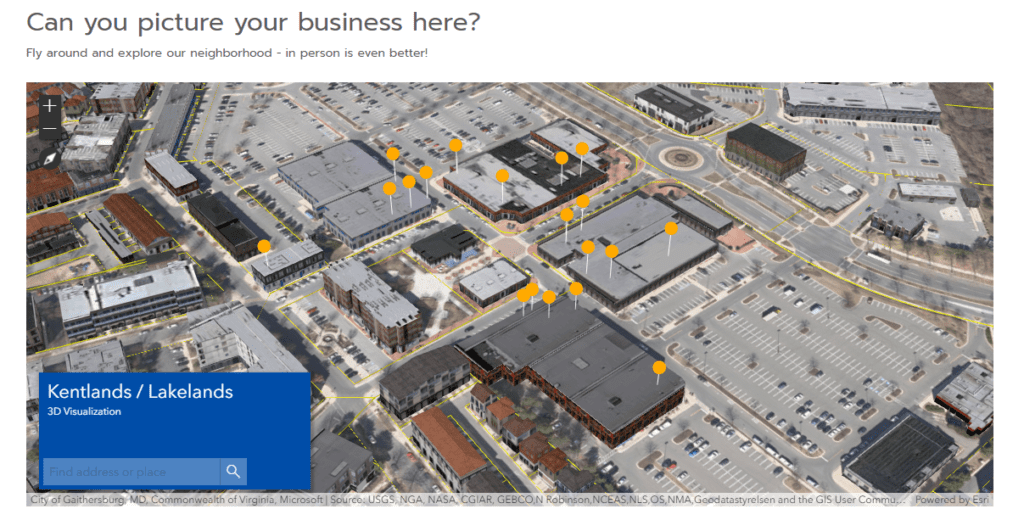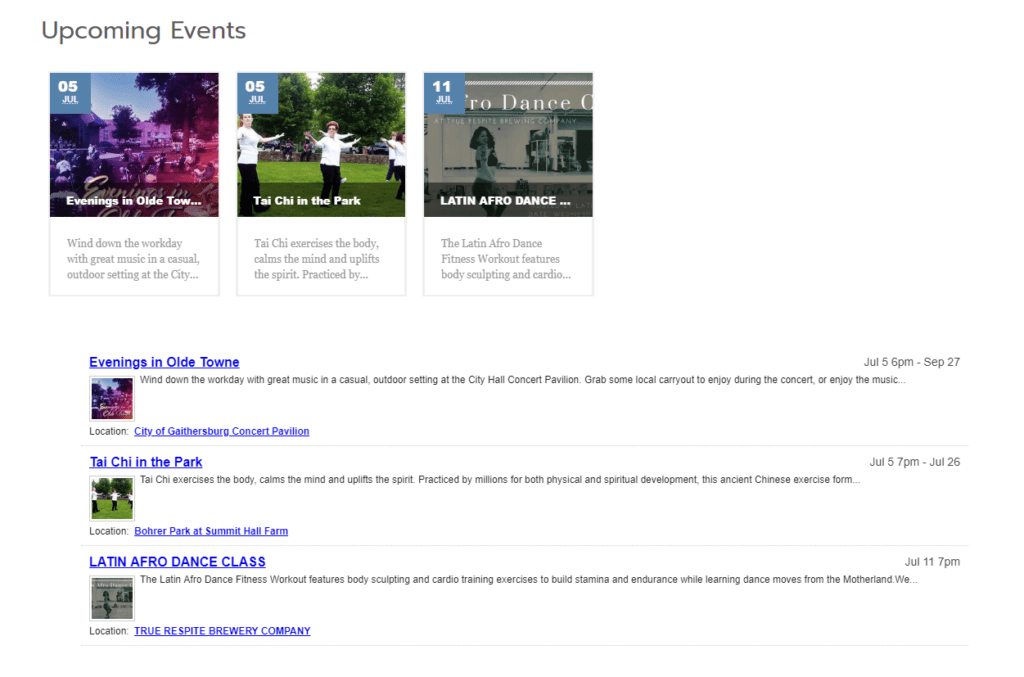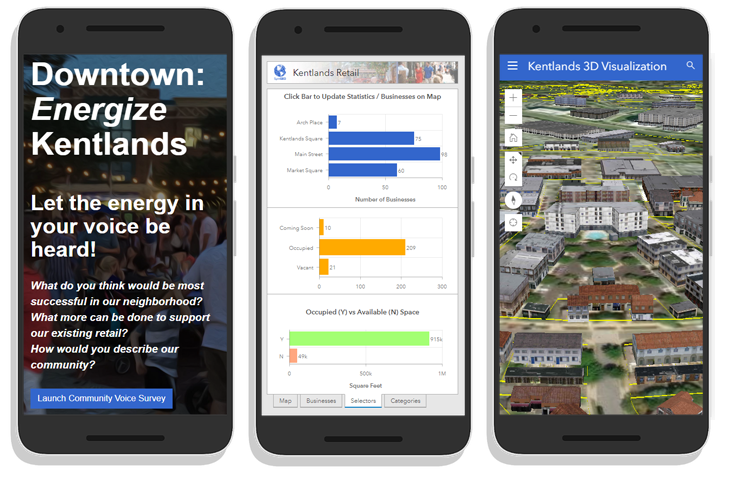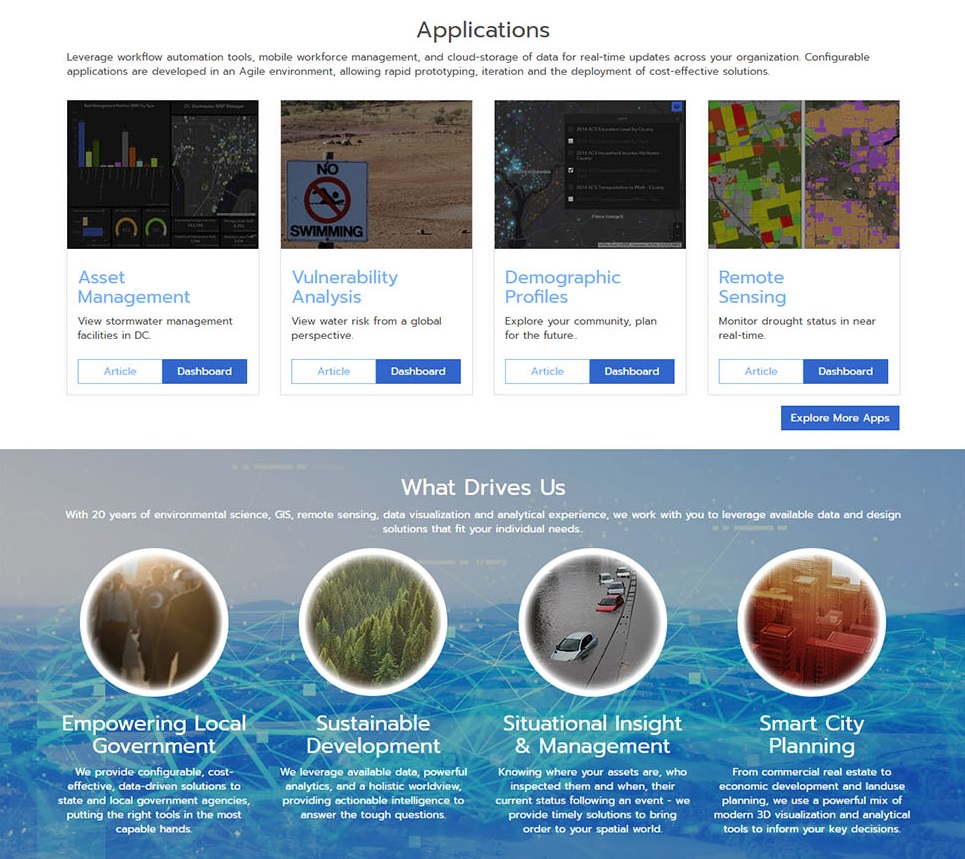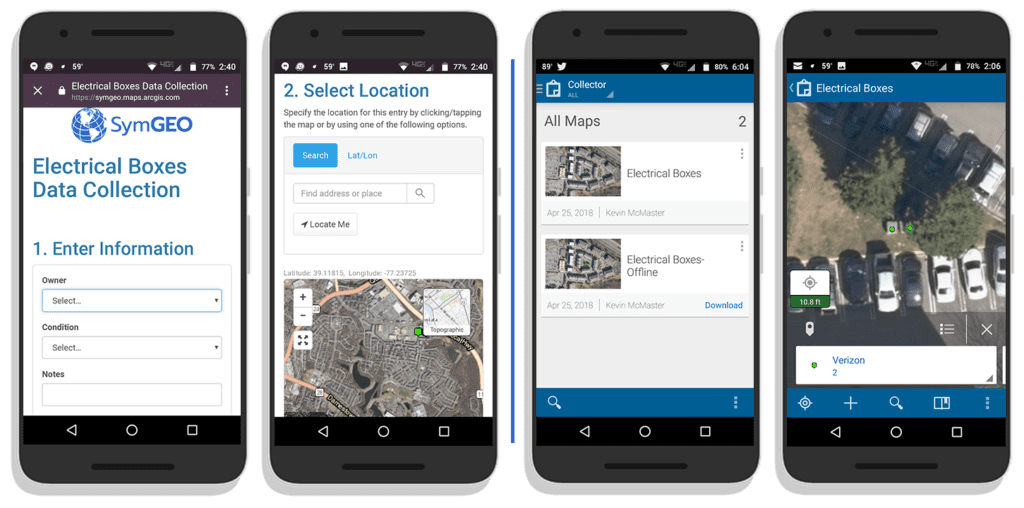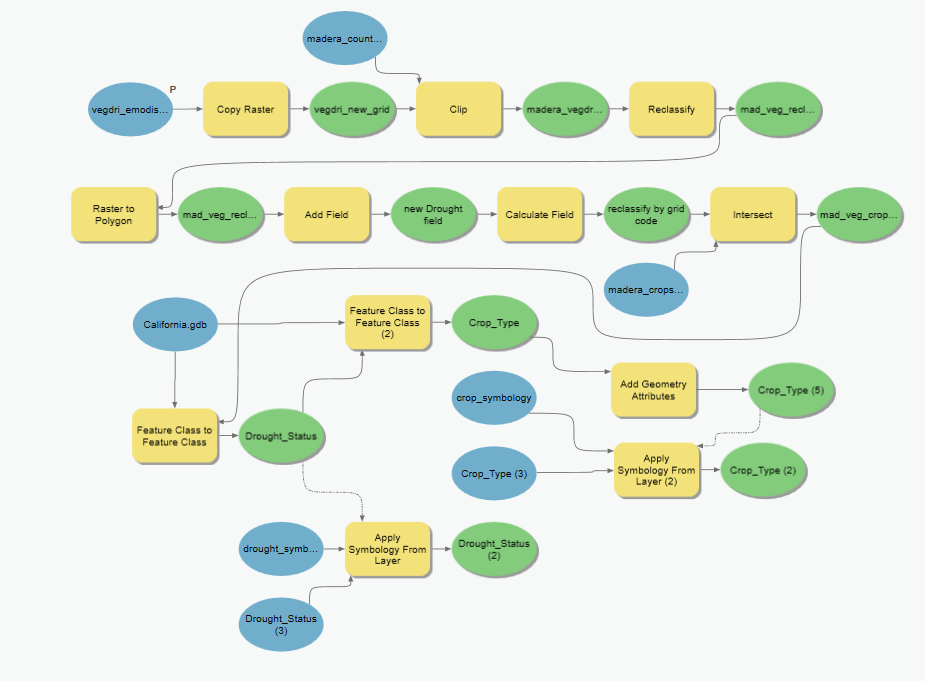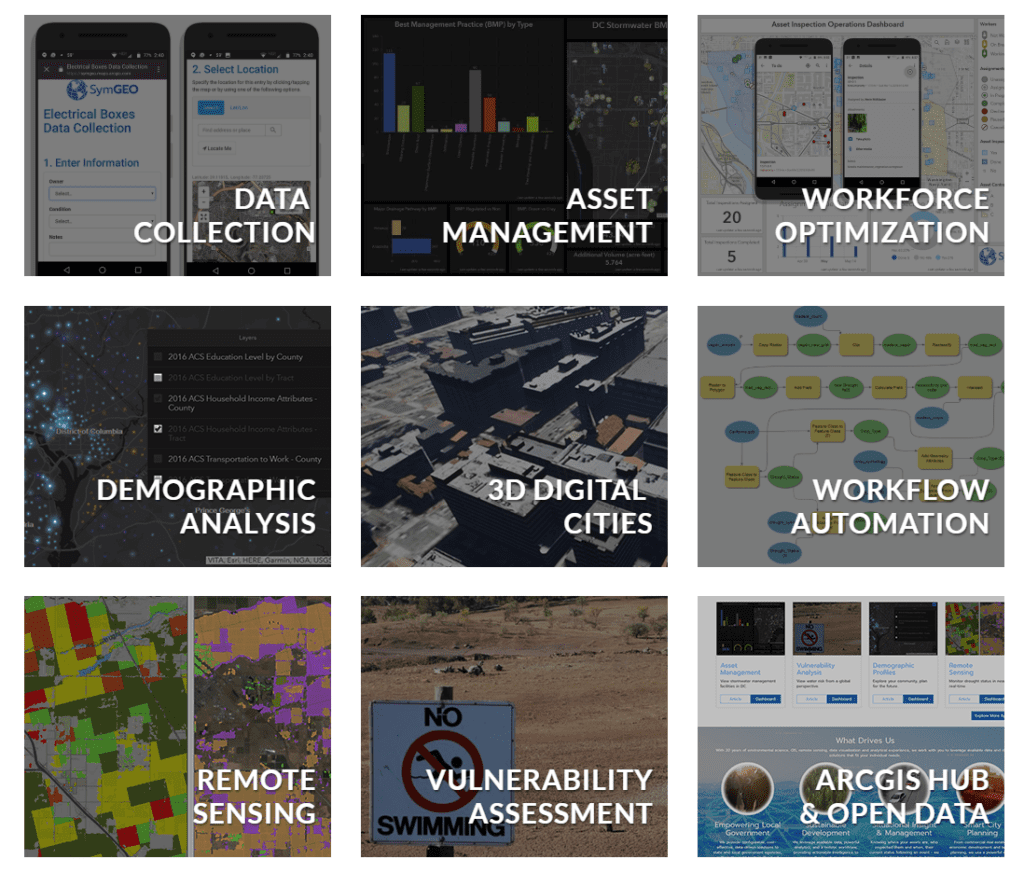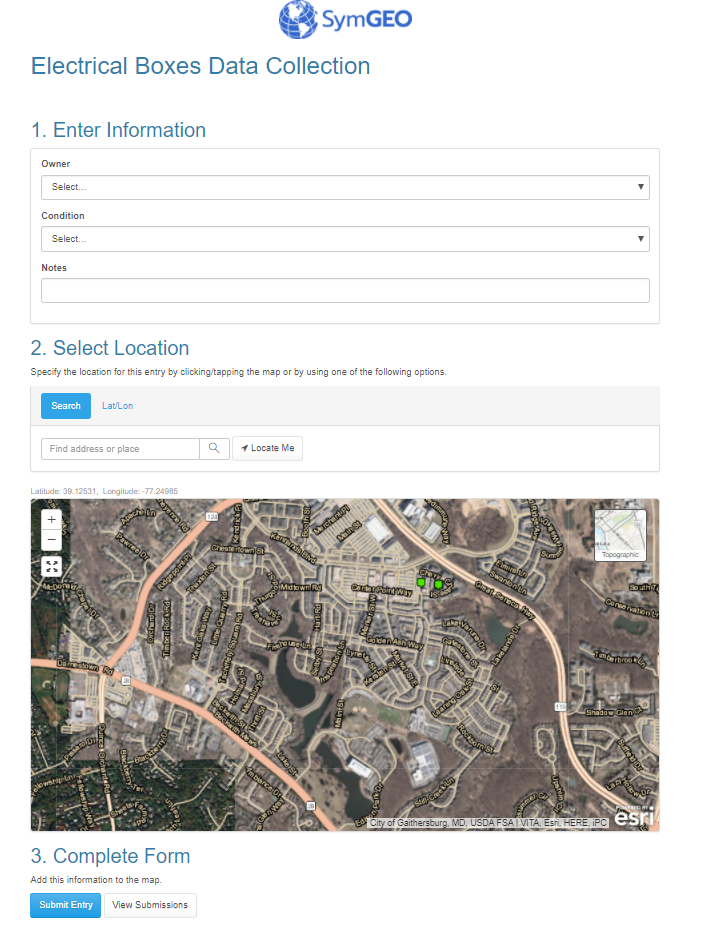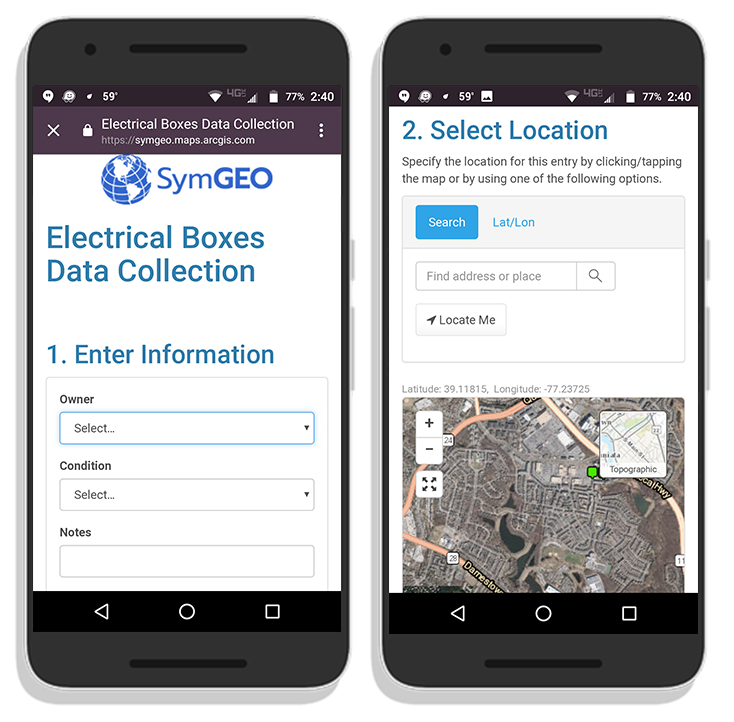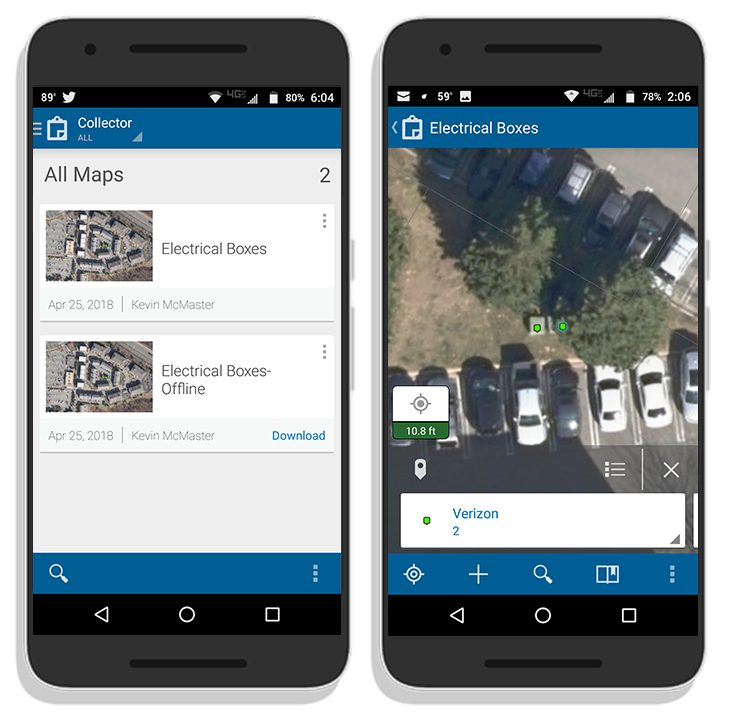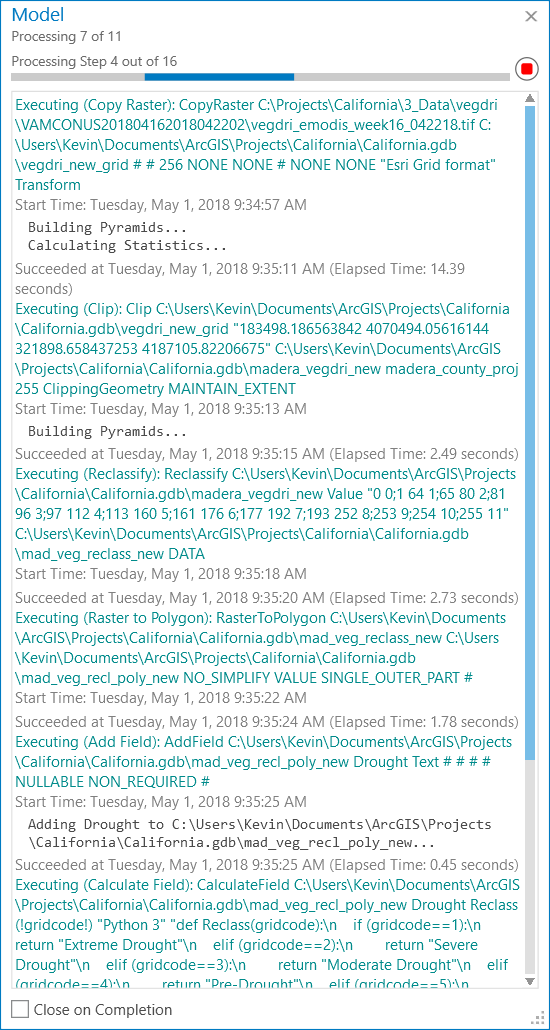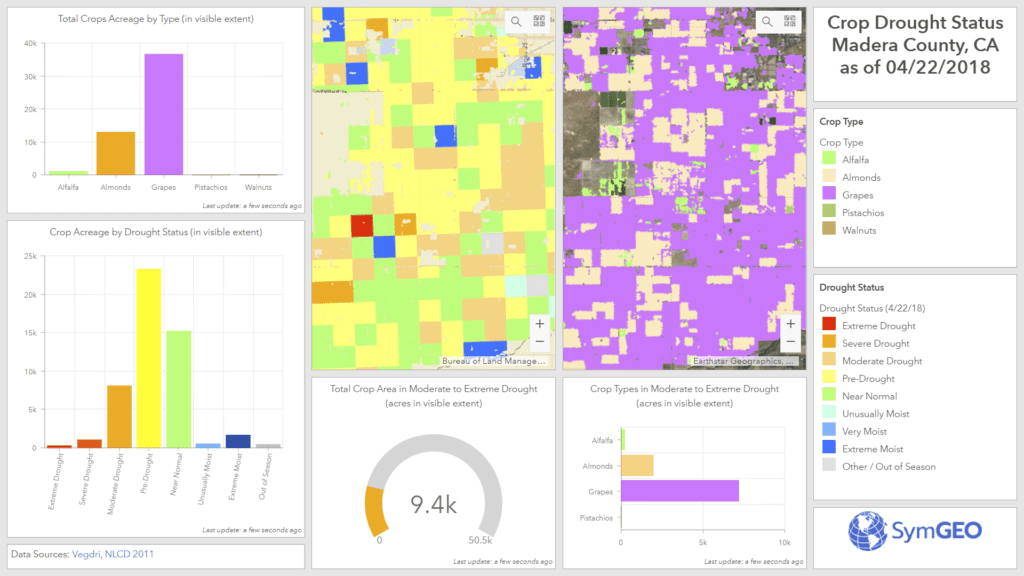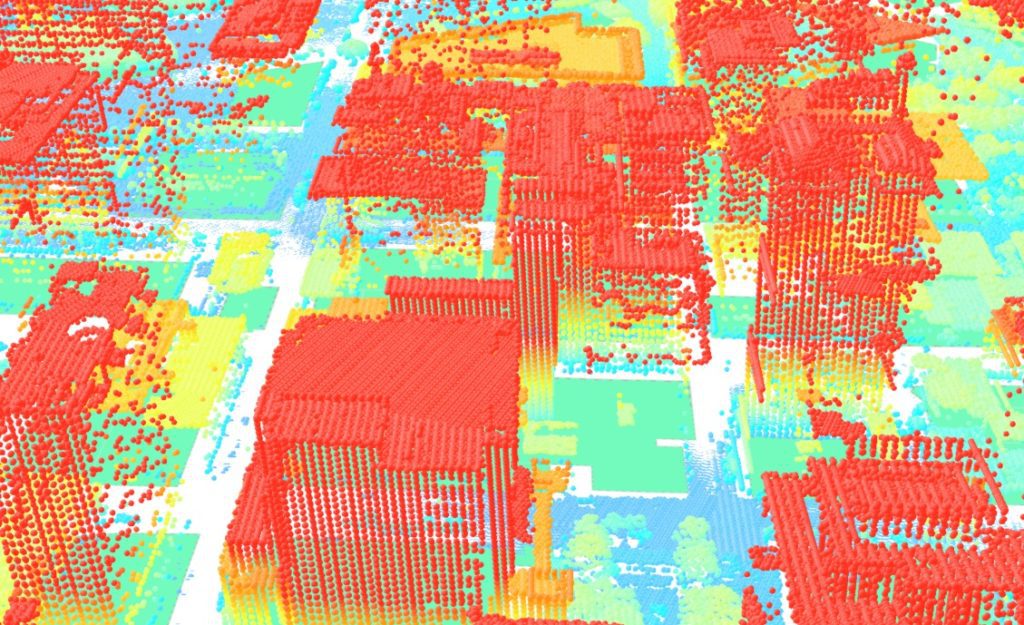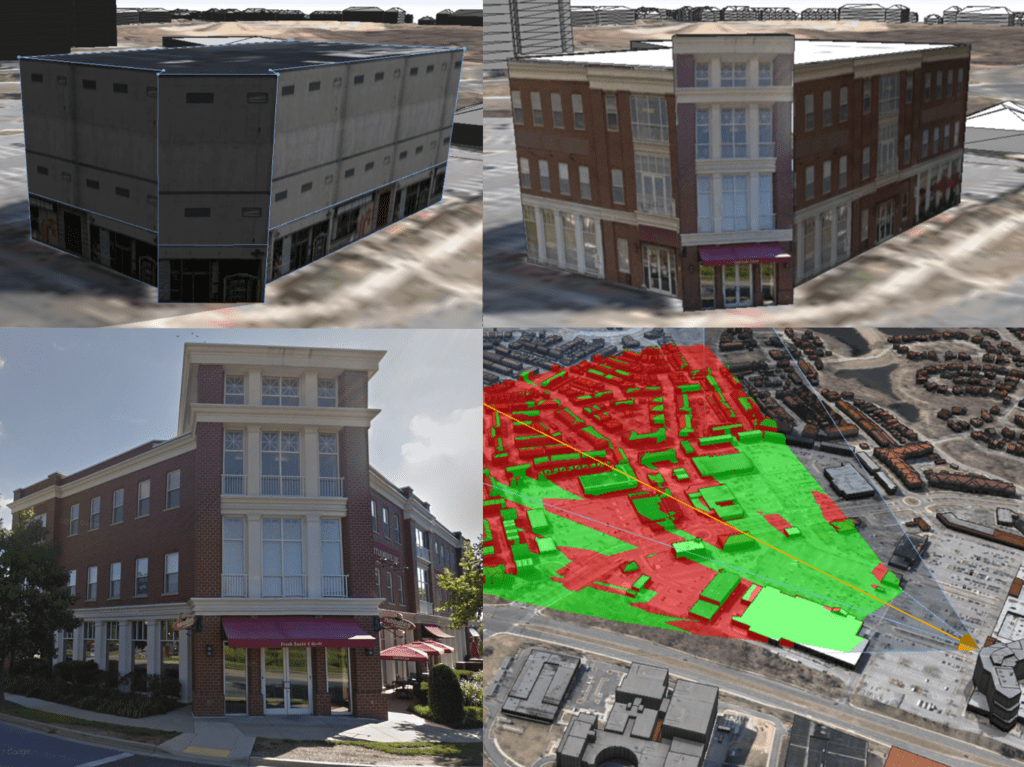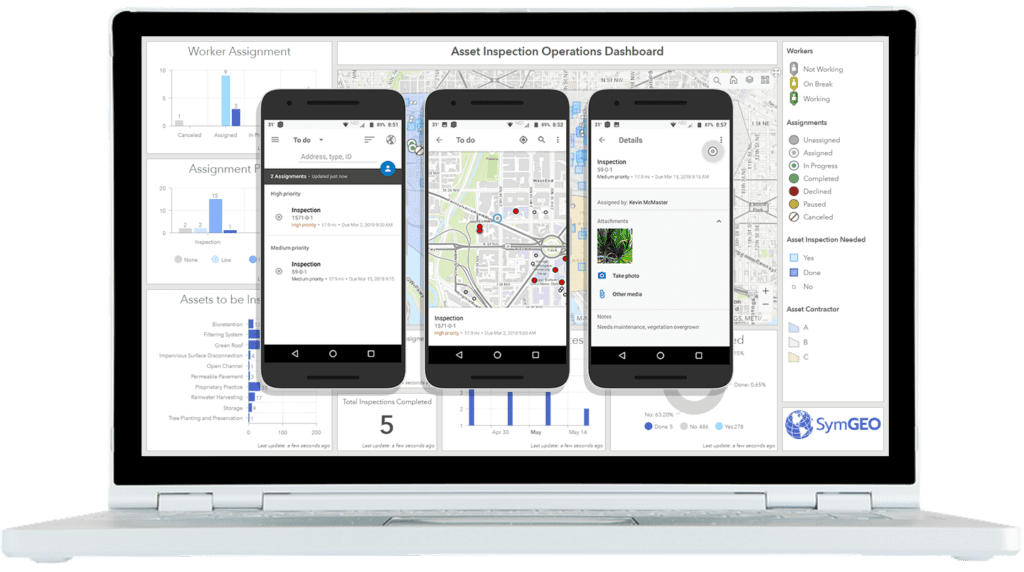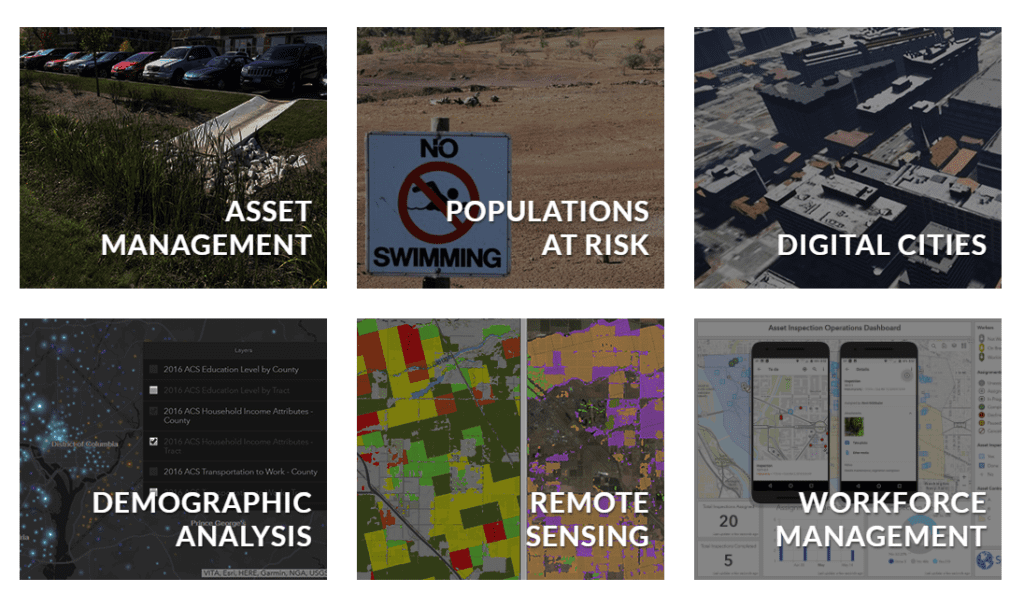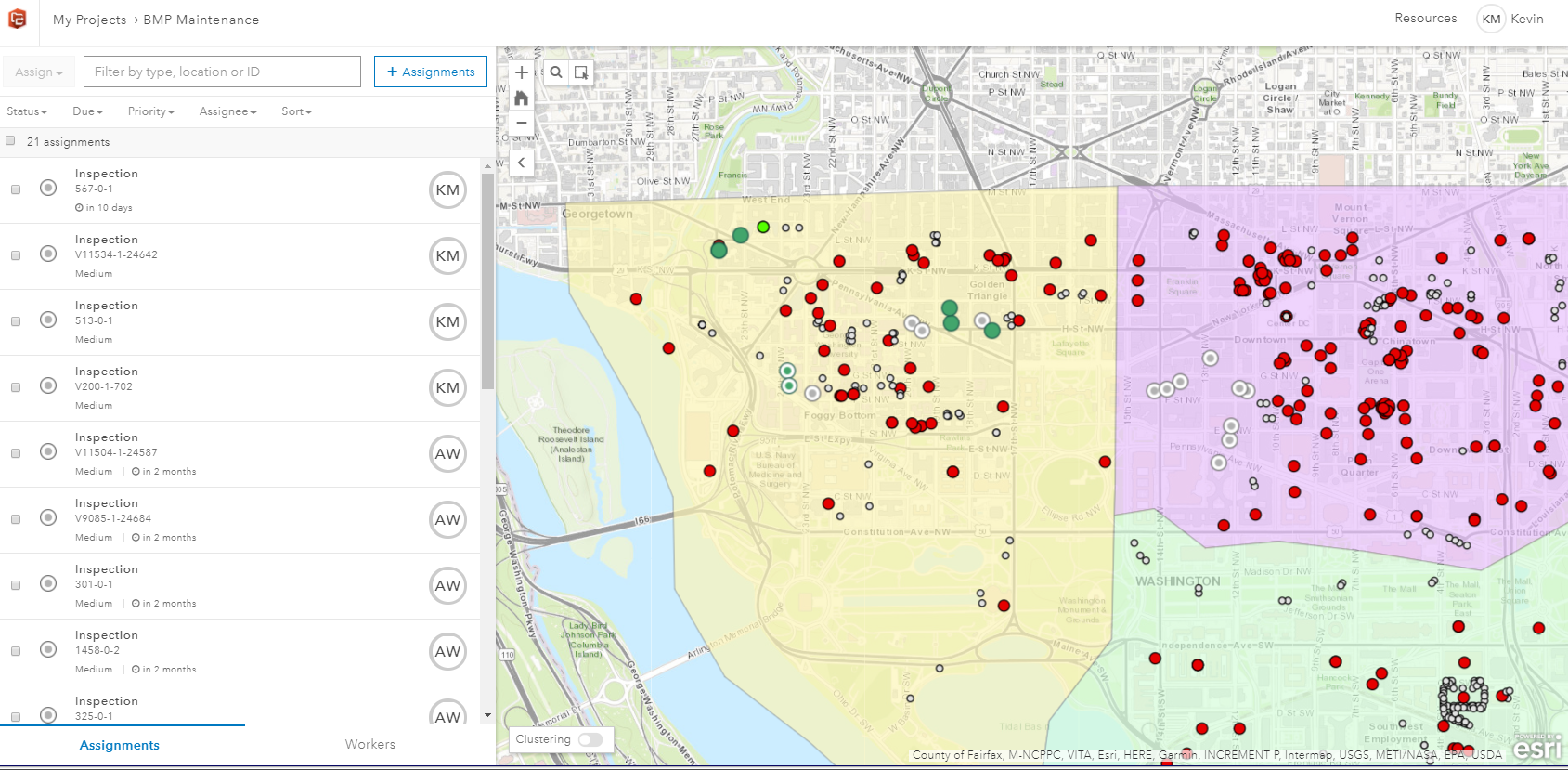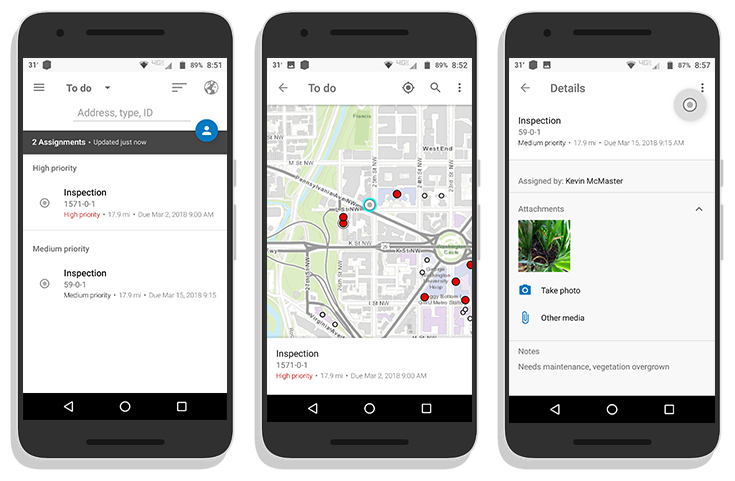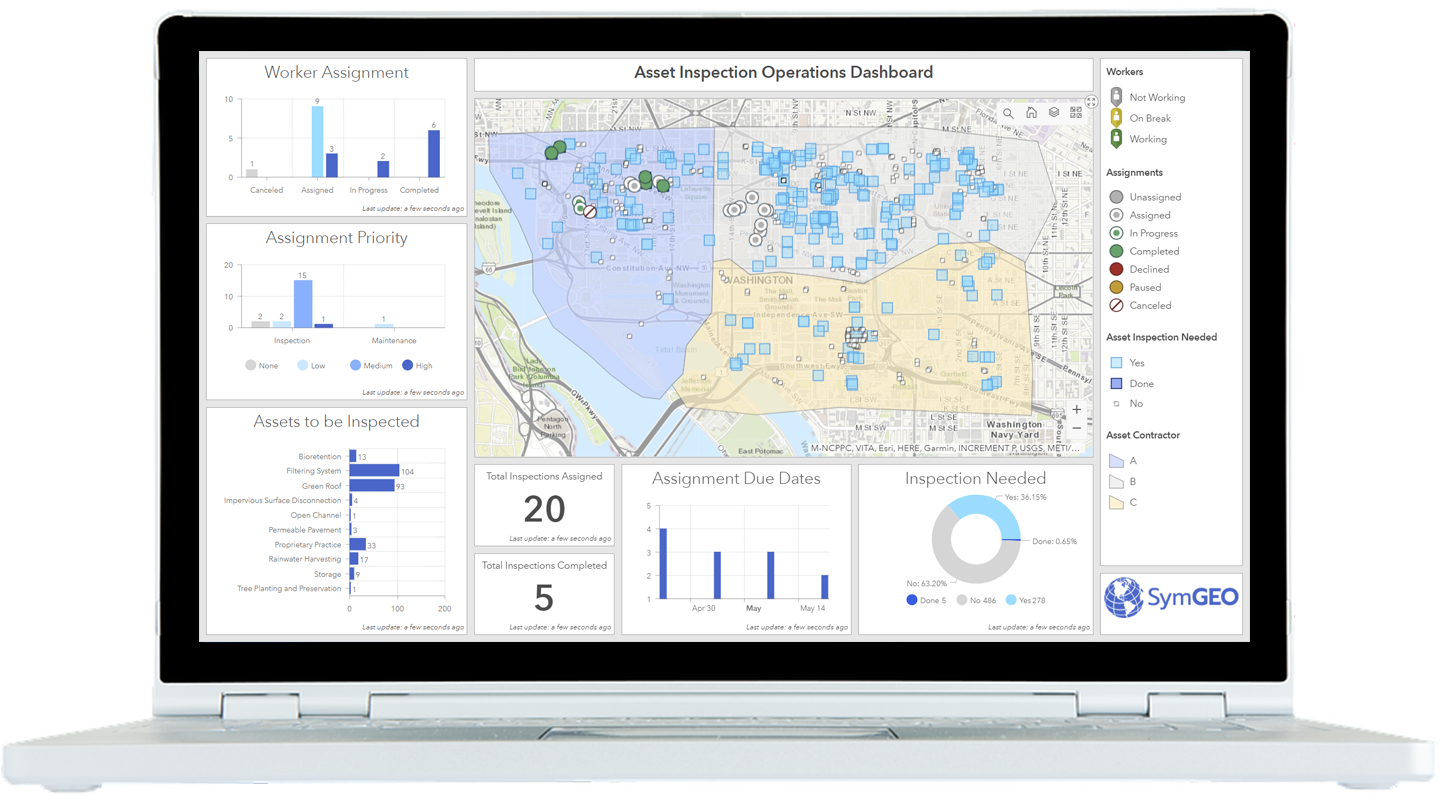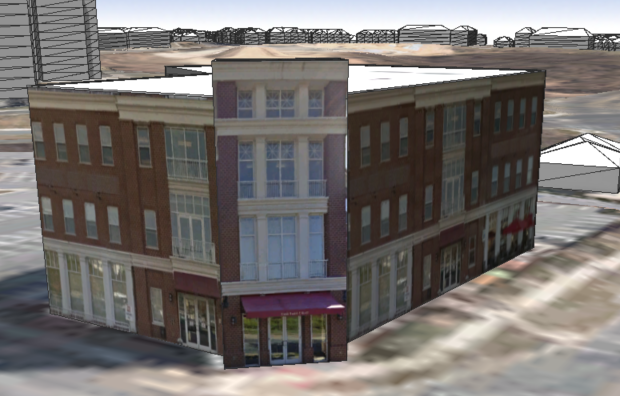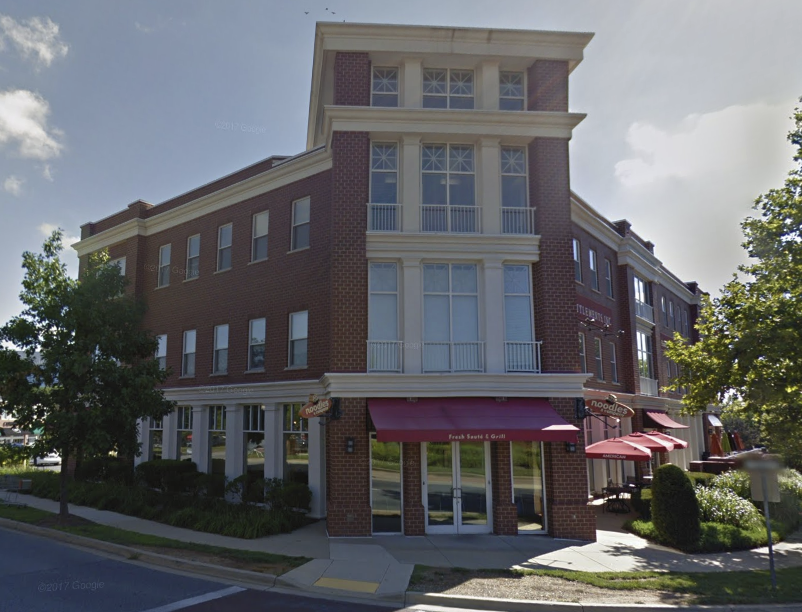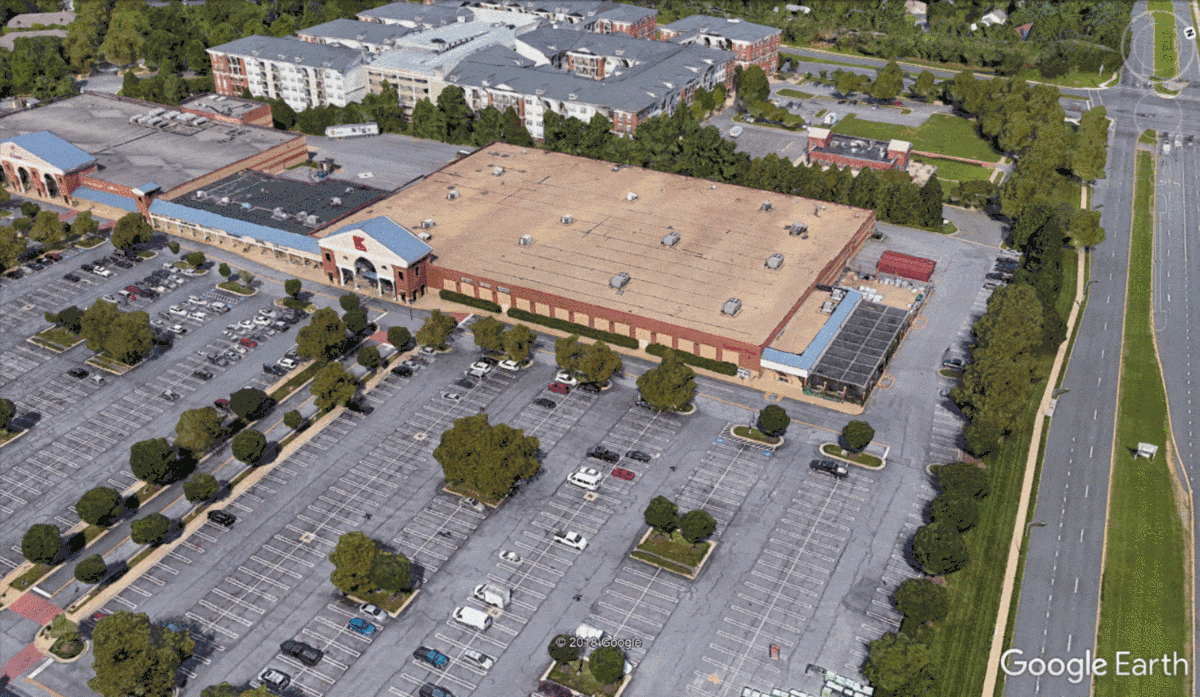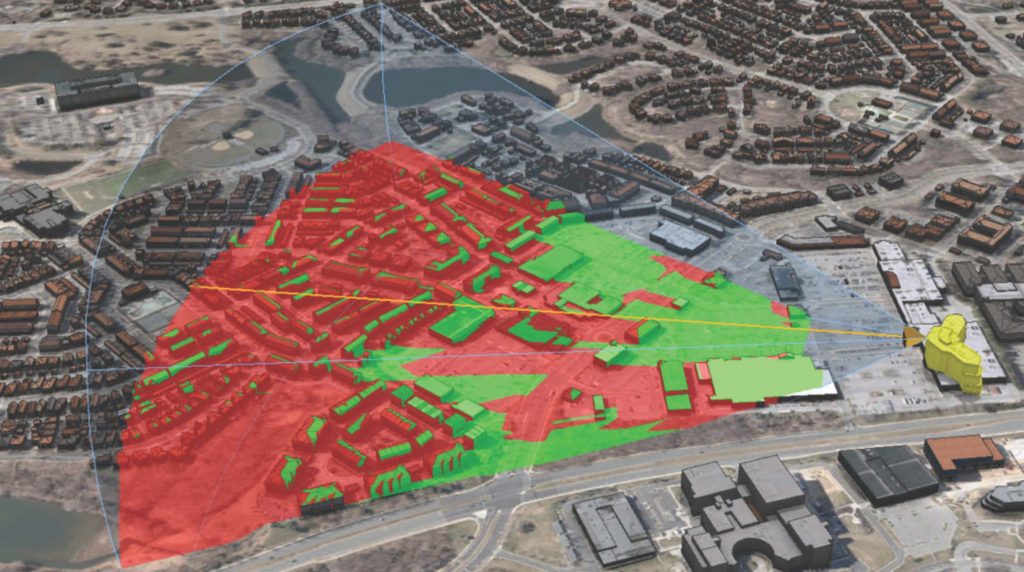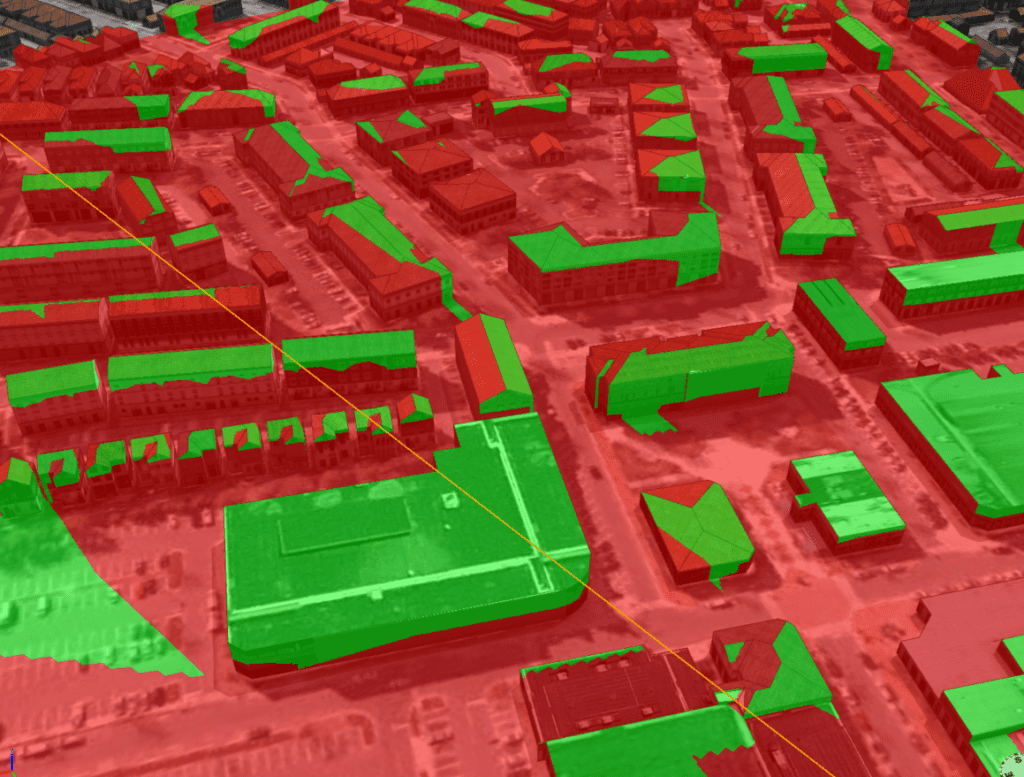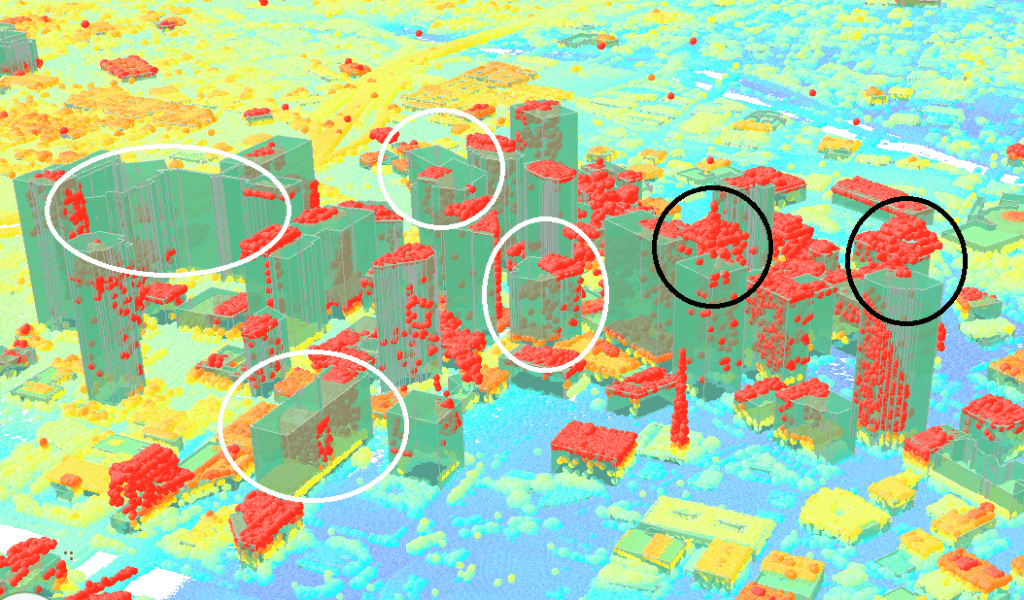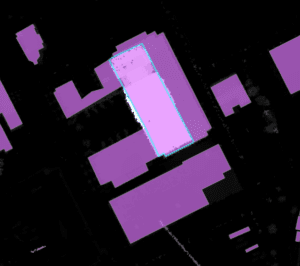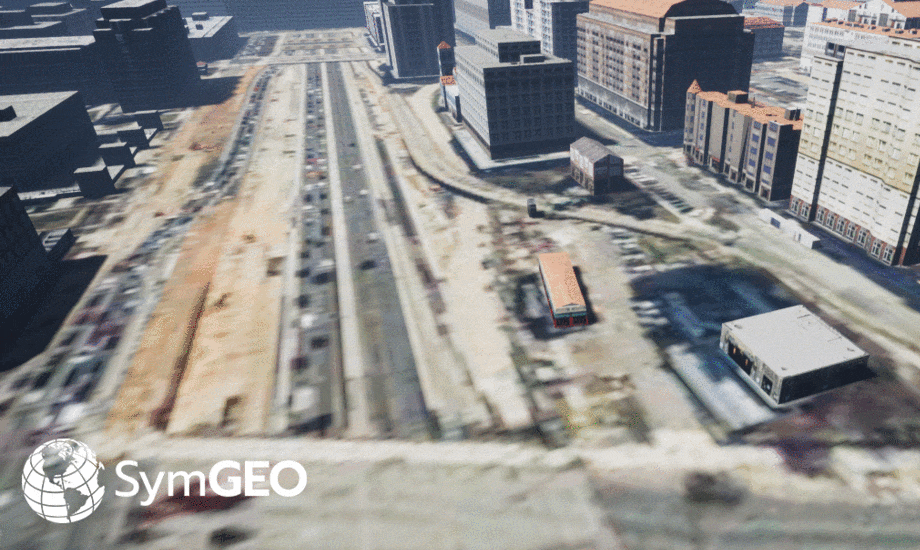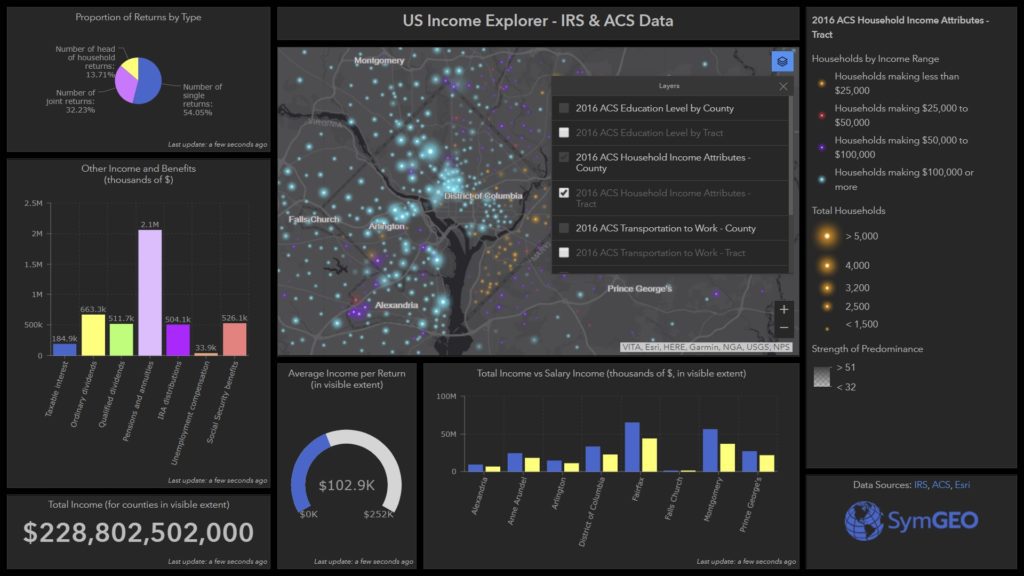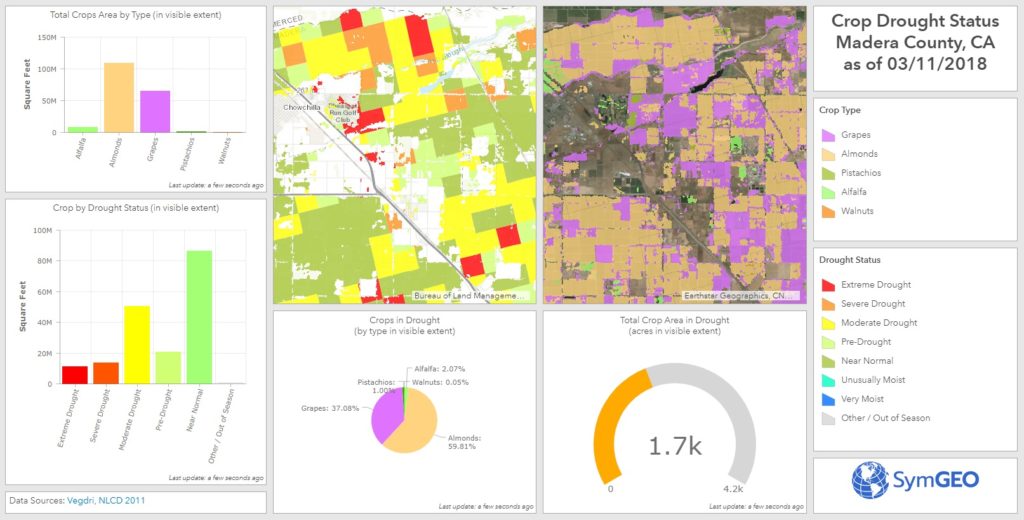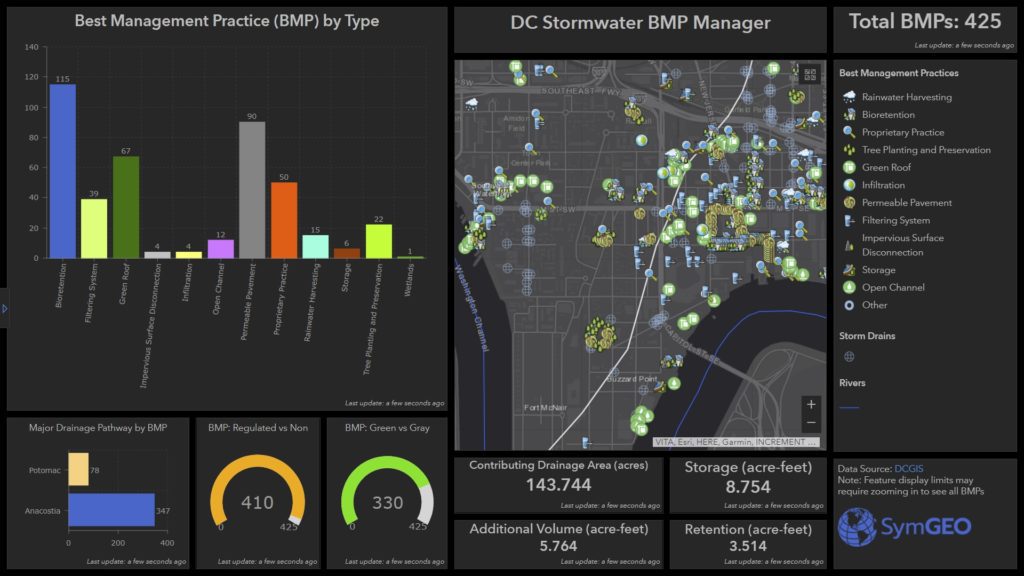Community engagement and business development are key ingredients for a successful neighborhood. Rapid advancements in web technology have made it easier than ever to engage with your citizens and neighbors and to create a real sense of ownership and responsibility for the direction of the community. To facilitate community engagement from a retail business perspective, SymGEO created Downtown: Energize! using ArcGIS Hub technology.
The site was well-received by residents and business owners, has been featured in several local newspaper publications, and in Esri’s ArcNews publication entitled “ArcGIS Hub Gets Mixed-Use Community Involved in Retail Decision-Making“. It also showcases a commercial real-estate management system designed to keep track of existing businesses, future businesses, and available locations.
Downtown: Energize! includes:
- An idea section for the community to voice what type of retail they would like to see, powered by Survey123.
- Word-clouds generated from community surveys into the types of retail that are needed
- An opportunity locator section to highlight available commercial properties, powered by GeoForms and Web AppBuilder
- A look at existing retail in the neighborhood
- Lots of great neighborhood-specific data from Esri
- The option to explore the neighborhood in a 3D model created using CityEngine and ArcGIS Pro
- Links to upcoming neighborhood events to show local activities
Everything is fully mobile responsive using modern Esri web architecture, ensuring community access and interactivity on the go.
If your community is ready to get started with Downtown: Energize!, let SymGEO know as we are here to help.
